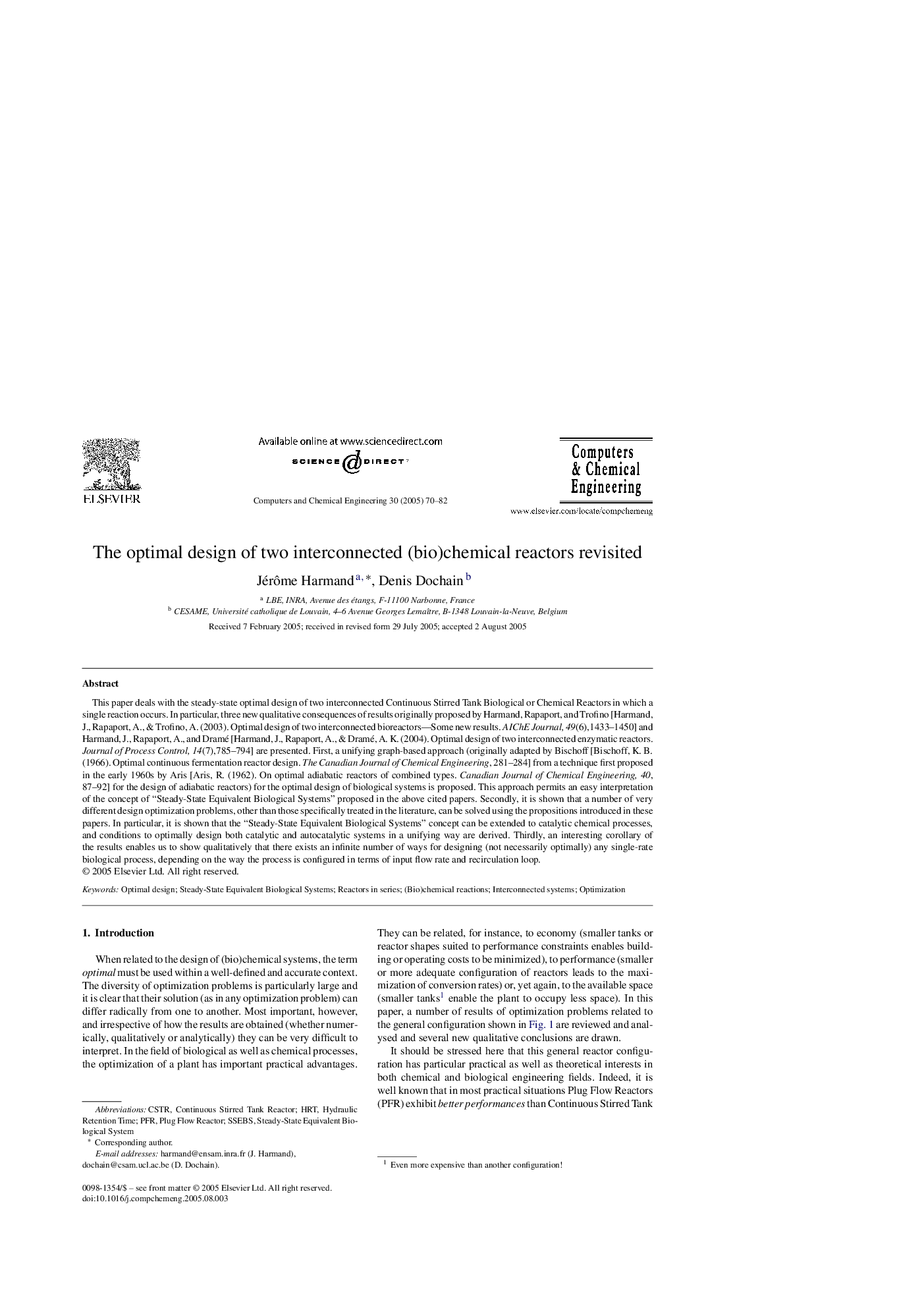| Article ID | Journal | Published Year | Pages | File Type |
|---|---|---|---|---|
| 10265691 | Computers & Chemical Engineering | 2005 | 13 Pages |
Abstract
This paper deals with the steady-state optimal design of two interconnected Continuous Stirred Tank Biological or Chemical Reactors in which a single reaction occurs. In particular, three new qualitative consequences of results originally proposed by Harmand, Rapaport, and Trofino [Harmand, J., Rapaport, A., & Trofino, A. (2003). Optimal design of two interconnected bioreactors-Some new results. AIChE Journal, 49 (6),1433-1450] and Harmand, J., Rapaport, A., and Dramé [Harmand, J., Rapaport, A., & Dramé, A. K. (2004). Optimal design of two interconnected enzymatic reactors. Journal of Process Control, 14 (7),785-794] are presented. First, a unifying graph-based approach (originally adapted by Bischoff [Bischoff, K. B. (1966). Optimal continuous fermentation reactor design. The Canadian Journal of Chemical Engineering, 281-284] from a technique first proposed in the early 1960s by Aris [Aris, R. (1962). On optimal adiabatic reactors of combined types. Canadian Journal of Chemical Engineering, 40, 87-92] for the design of adiabatic reactors) for the optimal design of biological systems is proposed. This approach permits an easy interpretation of the concept of “Steady-State Equivalent Biological Systems” proposed in the above cited papers. Secondly, it is shown that a number of very different design optimization problems, other than those specifically treated in the literature, can be solved using the propositions introduced in these papers. In particular, it is shown that the “Steady-State Equivalent Biological Systems” concept can be extended to catalytic chemical processes, and conditions to optimally design both catalytic and autocatalytic systems in a unifying way are derived. Thirdly, an interesting corollary of the results enables us to show qualitatively that there exists an infinite number of ways for designing (not necessarily optimally) any single-rate biological process, depending on the way the process is configured in terms of input flow rate and recirculation loop.
Keywords
Related Topics
Physical Sciences and Engineering
Chemical Engineering
Chemical Engineering (General)
Authors
Jérôme Harmand, Denis Dochain,
